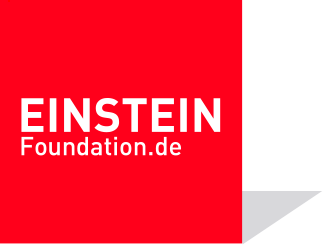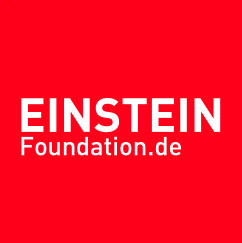Ludovic Vallier grows liver tissue from stem cells
Effective July 1, 2022, Ludovic Vallier will take up the W3 Einstein Strategic Professorship for Stem Cells in Regenerative Therapies at the Berlin Institute of Health at Charité (BIH). Vallier is an expert in pluripotent stem cells. He uses these versatile cells to grow liver organoids, which allow him to study the development and diseases of the human liver. He also plans to use them as a source of replacement tissue for patients with liver failure. The 49-year-old biologist joins the BIH from the University of Cambridge in the UK, where he is Professor of Regenerative Medicine affiliated to the Department of Surgery. He also serves as Deputy Director of the Wellcome-MRC Cambridge Stem Cell Institute. An Einstein Strategic Professorship allows Berlin’s universities to appoint leading international researchers and is made possible through the Einstein Foundation Berlin with generous financial support of the Damp Foundation.
The liver is a very special organ: If a piece of it is removed, it will quickly grow back to its original size. According to Greek mythology, Prometheus became painfully aware of this when, out of anger, Zeus had him chained to a rock and sent an eagle to eat his liver every day – only to have it grow back to be eaten again the next day. Unfortunately, this worked better for Prometheus than for many patients, explains Professor Ludovic Vallier, a stem cell researcher at the University of Cambridge: “Liver cells have a tremendous capacity to regenerate themselves. If half the liver has been removed during surgery, within a few weeks it will fully regenerate back to its full size. But if the liver is chronically damaged (e.g., due to poisoning, diabetes or cancer), it unfortunately loses this ability. An organ transplant is then the only solution.” Yet since there are fewer donor organs available than there are people waiting, Vallier is working on alternative organ replacement strategies: He is using human induced pluripotent stem cells and organoids generated from adult tissues to produce mini-livers for a diversity of clinical applications.
Mini-livers grown from patients’ own stem cells
Some 820 livers were transplanted in Germany in 2020. Just as many patients waited in vain for a donor organ to become available. Their livers failed due to poisoning, chronic infections with hepatitis B and C viruses, liver cancer and liver metastases, or nutritional liver damage. “The most common cause of acute liver failure is acetaminophen poisoning in adolescents,” Vallier says. “In such cases the organ often needs to be replaced within a few days. For patients with chronic liver diseases, such as alcoholic liver disease or obesity-related fatty liver, which progress to cirrhosis in the longer term, you have a bit more time to prepare but end stage disease will also require transplantation.”
In his lab, Vallier is growing replacement tissue from stem cells and organoids: “We produced the stem cells from patient skin cells. In the lab, we add a cocktail of four factors to the skin cells that makes them turn back into stem cells”. Shinya Yamanaka received the 2006 Nobel Prize in Medicine for the discovery of this method. “Alternativley, we can also grow liver cells in 3D conditions as organoids directly from human tissues”. The scientists treat the resulting induced pluripotent stem cells or organoids with special cocktails of growth factors and proteins to generate liver cells which can be combined together to create tiny organoids containing not only liver cells but also special immune cells, bile ducts and blood vessels. Getting the right proportions is the trick to organoid production.
First transplantation trials successful
To test whether organoids derived from the biliary system would actually function in the recipient, Vallier’s team first transplanted these mini organs into diseased mice. When the scientists realized that the cultured organoids could rescue mice and assumed the function of the damaged organ, they went one step further: They transplanted these organoids into the livers of deceased persons that were deemed unsuitable for transplantation. “We artificially perfused these livers with warm blood, thereby keeping these organs alive outside the body,“ Vallier reports, “and we were able to observe that the cultured organoids established contact with existing tissue and were fully functional.” This experiment, published in the journal Science in 2021, gave Vallier the confidence to take the next step: transplantation into patients.
That’s exactly what he is planning for Berlin. Here, he wants to optimize organoid production to ensure they are sufficient in both quality and quantity for a clinical trial. He will probably not generate individual organoids for each of the patients. Instead, he intends to use a universally compatible stem cell line from which organoids can be produced for different patients. “It would be a great success if the organoids could be used to extend the life span of the damaged liver and improves quality of life of patients” Vallier says.
Translating basic research into clinical practice
Professor Christopher Baum, Scientific Director of the Berlin Institute of Health at Charité (BIH) and Chief Translational Research Officer of Charité – Universitätsmedizin Berlin, used to work with stem cells himself. He is delighted that the renowned stem cell researcher is joining the BIH: “Ludovic Vallier will be a tremendous asset to strenghthen the stem cell research at the BIH Center for Regenerative Therapies. With his outstanding science and impressive international career, he will also play an important role in training the next generation of scientists coming through the Berlin School of Regenerative Therapies, and he will build important bridges with Berlin’s universities and other research institutions in the city through the Einstein Center for Regenerative Therapies. Vallier’s approach is translational in the best sense of the word: He uses basic research findings to develop therapeutic ideas that he then puts into clinical practice. This makes him an excellent fit for the BIH and our mission of turning research into health.”
From France to the UK to Berlin
Ludovic Vallier was born in France in 1973. He graduated in Molecular Biology and Immunology from the University Claude Bernard Lyon I in 1997. In 2001, he earned his PhD at Ecole Normale Superieur of Lyon in the group of Jacques Samarut, under the supervision of Pierre Savatier, studying mechanisms that control the cell cycle in mouse embryonic stem cells. Following a year in the biotechnology industry, Vallier moved to the University of Cambridge in the UK, where in 2008 he started his own lab at the newly opened Anne McLaren Laboratory for Regenerative Medicine (LRM) as an MRC non-clinical senior fellow. Vallier is respectively Professor of Regenerative Medicine affiliated to the Department of Surgery and Director of the Cambridge Biomedical Research Centre hIPSCs (human induced pluripotent stem cells) core facility. He also became Co-Deputy Director of the Cambridge Stem Cell Institute in 2019, was elected as a Fellow of the Academy of Medical Sciences in 2020 and joined the editorial board of Stem Cell Reports as associated editor. He has received numerous grants, including an ERC Consolidator Grant, and is currently the holder of an ERC Advanced Grant from the European Union. In parallel, he has been involved in the creation of several biotechnology companies including DefiniGEN and BiliTech.
Vallier is looking forward to working in Berlin: “The science scene in Berlin has taken on an incredible dynamic in recent years. There are impressive and innovative projects combined with visionary research institutes, and that attracts international scientists. And I particularly like the BIH’s translational mission.”
Further information:
https://www.stemcells.cam.ac.uk/people/pi/vallier
About the Berlin Institute of Health at Charité (BIH)
The mission of the Berlin Institute of Health at Charité (BIH) is medical translation: transferring biomedical research findings into novel approaches to personalized prediction, prevention, diagnostics and therapies and, conversely, using clinical observations to develop new research ideas. The aim is to deliver relevant medical benefits to patients and the population at large. As the translational research unit within Charité, the BIH is also committed to establishing a comprehensive translational ecosystem – one that places emphasis on a system-wide understanding of health and disease and that promotes change in the biomedical translational research culture. The BIH was founded in 2013 and is funded 90 percent by the Federal Ministry of Education and Research (BMBF) and 10 percent by the State of Berlin. The founding institutions, Charité – Universitätsmedizin Berlin and Max Delbrück Center for Molecular Medicine in the Helmholtz Association (MDC), were independent member entities within the BIH until 2020. Since 2021 the BIH has been integrated into Charité as its so-called third pillar. The MDC is now the Privileged Partner of the BIH.
About the Einstein Foundation Berlin
The Einstein Foundation Berlin is an independent, not-for-profit, science-led organization established as a foundation under civil law. For over ten years, it has promoted international cutting-edge science and research across disciplines and institutions in and for Berlin. It has funded 200 researchers - including three Nobel laureates - over 70 projects, and seven Einstein Centers. For science. For Berlin.

